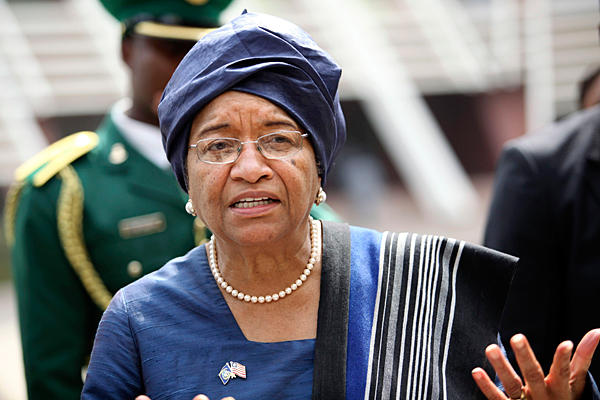
Zimbabwe struck more mega deals in China with funding agreements and feasibility studies of power projects, road dualisation and railway line construction being put on paper yesterday.
There were indications that the Chinese government had assured the Zimbabwean delegation – led by President Mugabe – that there would be no cap on how much Beijing can avail to Harare on viable projects from which loan repayments would be recouped from the same.
The President, who is here on a week-long state visit, witnessed the signing of the agreements that include a memorandum of understanding for feasibility studies on the digitalisation of the national broadcaster ZBC and Transmedia ahead of the June 2015 International Telecommunications Union deadline after which all broadcasters should have switched to digital.
A consortium of private Zimbabwean and Chinese companies, China Africa Sunlight Energy (CASECO), signed an integrated project worth over US$2 billion that will see the firm constructing a 600-megawatt thermal power station in Gwayi by 2017, produce 2,4 million tonnes of underground coal per year, construct the Gwayi-Shangani Dam as well as construction of Gwayi-Insukamini Power Station transmission line.
The company is a joint venture between Oldstone Investments, a Zimbabwean company and a Chinese firm, Shandong Taishan Sunlight Investments, with its consortium HCIG Energy Company Limited and Cad Fund.
The four firms signed the agreement for the development of the Gwayi Integrated Project.
Permanent Secretary in the Ministry of Defence, Mr Martin Rushwaya, who is chairperson of Oldstone Investments, signed on behalf of the Zimbabwean firm while three representatives of the Chinese companies represented their firms.
Speaking to the media after the signing ceremony, Finance and Economic Development Minister Patrick Chinamasa, said the project was one of the priority areas that the Zimbabwean delegation put to their Chinese counterparts in the Zimbabwe-China Joint Permanent Commission when they met last week.
He said besides the four key mandates of the joint-venture firm, the consortium had also committed to build a Gwayi Industrial Park in Gwayi under the Greater Lupane Special Economic Zone.
“The company is committing itself to establishing an industrial park, which would be a petro-chemical industrial park and this we hope over time will be able to set up fertiliser companies, which arise from exploitation of coal bed methane gas,” he said.
“When they establish their thermal power station, they will need water and they have committed themselves to lending $54 million to Government towards the construction of the Gwayi-Shangani dam and for the record, Government is looking for $10 million towards the construction so that work already done is not washed away when the rains come.”
Minister Chinamasa said the firm was immediately advancing Government a $10 million loan facility towards completion of work started before the rainy season starts.
“The first phase to generate 300MW will cost $400million and all told, we are looking at over the years an investment of around $2 billion into that area.
“In our joint commission, we also urged the Chinese authorities and state banks to give support to that private sector driven integrated project,” he said.
CASECO executive board secretary, Mr Isaac Chihuri, said signing of the agreement kick-started serious work on the project.
“The agreement signifies the coming into life of an integrated project and commencement of the implementation of the exercise. The historic significance is that the power station will be the third largest in Zimbabwe after Kariba Hydro and Hwange Thermal power stations.
“In terms of coal mining, the company will be the second largest after Hwange Colliery. CASECO will also become the largest independent power producer in Zimbabwe, which is clear that the company’ s efforts seek to complement Zim-Asset. People are already on the ground and civil works will start now that the deal has been signed,” said Mr Chihuri.
Minister Chinamasa said Government had also signed an agreement for feasibility studies on coal exploitation and construction of a thermal power station that was expected to add 600MW to the national grid.
“This will be in the Sibugwe area in Binga. So we have signed an MoU to jointly conduct a feasibility study. I want to emphasise that the feasibility studies that we are going to conduct will be done jointly. I consider it important that we build our own capacities to do these things,” he said.
Minister Chinamasa said Government also signed other MoUs for feasibility studies on dualisation of the country’s highways among them Beitbridge-Harare, Harare-Nyamapanda, Harare-Chirundu and Mutare-Harare.
He said Government would not mortgage it’s minerals to get funding from China for its projects.
“Our securitisation, which we have already agreed (on) is not to mortgage our minerals but to set aside a portion of cashflows that arise when we are exploiting our mineral resources whether diamond and gold.
“As you know, companies which are exploiting our diamonds, gold are liable to taxation royalty, depletion fee and other aspects of taxation and basically the framework which we have agreed is that from those taxes, I can set aside a portion of those cashflows towards servicing any loans that I secure to fund our various projects,” he said.
On digitalisation feasibility studies, Minister Chinamasa said Government was committed to meet the International Telecommunications Union deadline of switching over from analogue to digital by June next year.
Minister Chinamasa signed the MoU for feasibility studies on behalf of the Government while Huawei managing director Mr Spawn signed for his firm.
The firm has been given two months to complete feasibility studies.
“So time is not on our side and we have to move with some speed. So we have entered into an MoU with Huawei jointly to do a feasibility study on digitalisation and we hope that this could be done sooner rather than later.
“It’s only after we have done feasibility studies that we will be able to look up for money. Otherwise people look at you and say how much does it cost and we have no answer. So it’s very critical that we have a feasibility study done.
“Digitalisation will open up new opportunities, which in the medium to long term, I also look at this project as cash cows along with what we are doing with NetOne and TelOne. I look at these three as cash cows in terms of the expectations that I have for inflows into the exchequer,” he said.
Government also signed a loan of $218 million towards NetOne to expand their coverage of telecommunication that would result in the expansion of the mobile network operator’s network coverage.
Minister Chinamasa said he also requested China Export and Credit Insurance Corporation to give insurance to a loan of $98 million from China Exim Bank to TelOne in order for them to expand fibre optic programmes.
“In this regard, I have committed Treasury to take over a legacy debt of $359 million so that the TelOne balance sheet is cleaned up to make it more attractive to the suitors who might want to advance funding to the company. I have already communicated this message to China Export and Credit Insurance Corporation and also to China Exim Bank that when they deal with TelOne they should do without the $360 million legacy debt,” he said.
He said Government also signed MoUs for feasibility studies on construction of a railway line from Harare to Mutare, Alaska to Sherwood transmission lines and establishment of a cement factory in Mberengwa.



